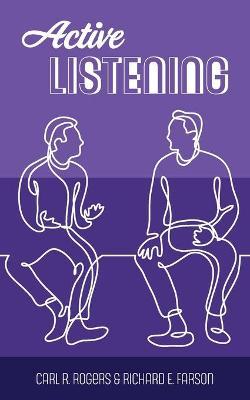What is Deep Listening
And Why Is It Critical?
When people talk, listen completely. Most people never listen. Earnest Hemingway.
But how come? Most of us want to listen. In fact most of us think we are above average listeners. So what goes wrong and is there a solution?
How to listen deeply
Yes, there is a solution and it started back in 1957, made a huge leap forward in 1994 and recently, neuroscience has confirmed and added to our knowledge.
Active Listening
In 1957 Carl Rogers and Richard Farson coined the term active listening.
It was a method to get us inside the speaker, to grasp, from their point of view, just what they are communicating to us.
Alan Cox
1994 I was invited to attend a workshop by Dr John Savage teaching Deep Structure Listening which is also referred to as Deep Listening, a more powerful way of listening. Brainy Gecko’s Mindful Listening online video course, based on Dr Savage’s workshop and current neuroscience.
Deep Listening is Active Listening on steroids.
OK, what is Deep Listening, and why is it essential for all personal and professional relationships?
Active Listening Plus
“…Active Listening became mainstream but has now paved the way for a more radical and powerful way of listening – called “Deep Listening” Ipek Serifsoy, PhD
Interpersonal Communication is complex because Words alone are inadequate.
Words alone can never fully express the message we want to convey. Every message is encoded into words through our feelings, inferences, attitudes, and thoughts. The words themselves only communicate a part of the intended message. The remainder is communicated subconsciously through body language.
Body language
A considerable percentage of our communication comes via our body language. Facial expressions, the eyes, tone of voice, and skin colour on the face and neck are some indications that reveal the unspoken message.
Assumptions kill relationships
The problem is that the listener makes assumptions based on these signs’ interpreting what the speaker means based on what they hear, see and feel.
These assumptions often lead to misunderstanding and potential conflict, which is why Deep Listening is so complex.
Deep Listening
The magic of metaphors
People tell stories, right? And people use metaphors to help clarify what they are trying to say. For example, a mother describing her child at a new school. “He was like a fish out of water”. But did you know metaphors we use are loaded with valuable information?
The magic of Language
The words you use also give the Deep Listener a tremendous amount of free information, which is like gold.
What is not spoken
By listening to both the metaphors and language used by the speaker, Deep Listeners can make an educated guess at what is left unsaid.
Then, using carefully crafted questions, the listener can check their assumption with the speaker bringing the unspoken message into their conscious awareness, enabling them to make a rational choice
Benefits of Deep Listening
- Validates and values the speaker
- Builds rapport and trust
- Creates personal growth
Click the button below and learn how you can become a Deep Listener.
Take Action
Find out how to establish and maintain rich, rewarding connections. Visit brainygecko.com and check out the three courses we offer.
How to Manage Change
We grow, we mature we change. When we don’t understand the process of change stress increases.
When you understand what is happening, you can make better decisions.
Enriching your relationships
Learn why communication fails and get the skills to improve your communication.
We show you ‘HOW’ to create long-lasting, meaningful, and rich relationships.
Prevent divorce
The Departure Lounge is a series of 6 short videos that show you how to stop small events from turning into marriage wreckers.
Act early and prevent the pain and suffering of marriage breakdown.
Get all three by clicking the button below.

